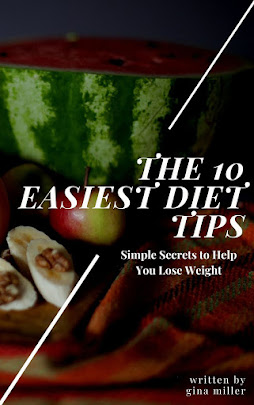Tuesday we focused on snack swaps you can make when you're craving sugar. Today let's be more proactive.
Sugar can be the devil. It's a devil I love and battle every day. Excessive sugar can damage your heart, cause diabetes and much more. It's not like one cookie killed anyone. Moderate indulgences are fine but it's hard to be moderate when it comes to the white stuff.
That legal crack is everywhere.
If you start checking nutrition labels you will be shocked when you learn about the amount of sugar in some of your favorite foods that you thought were naturally sugar free.
In fact, among the changes the FDA recently suggested the White House make regarding food labels was to address added sugar. Most food labels only list "Sugar" which is a combination of added and natural sugars. One proposed change is that the amount of added sugar be clearly labelled. This will help you determine how much sugar comes from a natural source and how much is added.
Still, it's good to check for what I like to call "sneaky sugars".
Any time you see a word ending in -"ose" that's added sugar. Dextrose, fructose, maltose, sucrose, glucose? All forms of sugar. Beware of other forms such as cane syrup, cane juice, corn syrup, malt syrup, honey, molasses, fruit juice concentrate or brown sugar.
Then there are foods you wouldn't think have much sugar but do:

Sugar can be the devil. It's a devil I love and battle every day. Excessive sugar can damage your heart, cause diabetes and much more. It's not like one cookie killed anyone. Moderate indulgences are fine but it's hard to be moderate when it comes to the white stuff.
That legal crack is everywhere.
If you start checking nutrition labels you will be shocked when you learn about the amount of sugar in some of your favorite foods that you thought were naturally sugar free.
In fact, among the changes the FDA recently suggested the White House make regarding food labels was to address added sugar. Most food labels only list "Sugar" which is a combination of added and natural sugars. One proposed change is that the amount of added sugar be clearly labelled. This will help you determine how much sugar comes from a natural source and how much is added.
Still, it's good to check for what I like to call "sneaky sugars".
Any time you see a word ending in -"ose" that's added sugar. Dextrose, fructose, maltose, sucrose, glucose? All forms of sugar. Beware of other forms such as cane syrup, cane juice, corn syrup, malt syrup, honey, molasses, fruit juice concentrate or brown sugar.
Then there are foods you wouldn't think have much sugar but do:
Fat-free salad dressings, crackers, bread, spaghetti sauce, instant oatmeal (a sugar BOMB), yogurt (another bomb), frozen dinners, cereals, ketchup and barbecue sauce.
Look at these two examples from my cupboard:
Look at these two examples from my cupboard:
On the left is a box of All Bran cereal while on the right is a box of Back to Nature Crispy Wheat crackers, two things you generally wouldn't consider "sweet" food items. The cereal has six grams of sugar per serving while the crackers have four.
This barbecue sauce has nine grams of sugar per serving.
How much should sugar you consume?
The American Heart Association recommends nine teaspoons for men and six for women per day. You can blow your wad in a regular 12-ounce soda when you realize it has 10 teaspoons of sugar.
The thing is, sugar is listed in grams on most nutrition labels. A gram and teaspoon are two different units of measurement. A gram measures mass (aka weight) while a teaspoon measures volume.
How do you know how much you're consuming? In general, there are about four grams of sugar per teaspoon.
How do you know how much you're consuming? In general, there are about four grams of sugar per teaspoon.
4 grams of sugar = 1 teaspoon
The Takeaway
Again, moderate consumption of any of these items won't hurt you. It's the cumulative effect and overindulgence that does damage. Just be mindful of your overall sugar consumption each day.
I'll be fighting that battle against the White Devil right along with you.
I'll be fighting that battle against the White Devil right along with you.

.JPG)















Be First to Post Comment !
Post a Comment
Note: Only a member of this blog may post a comment.